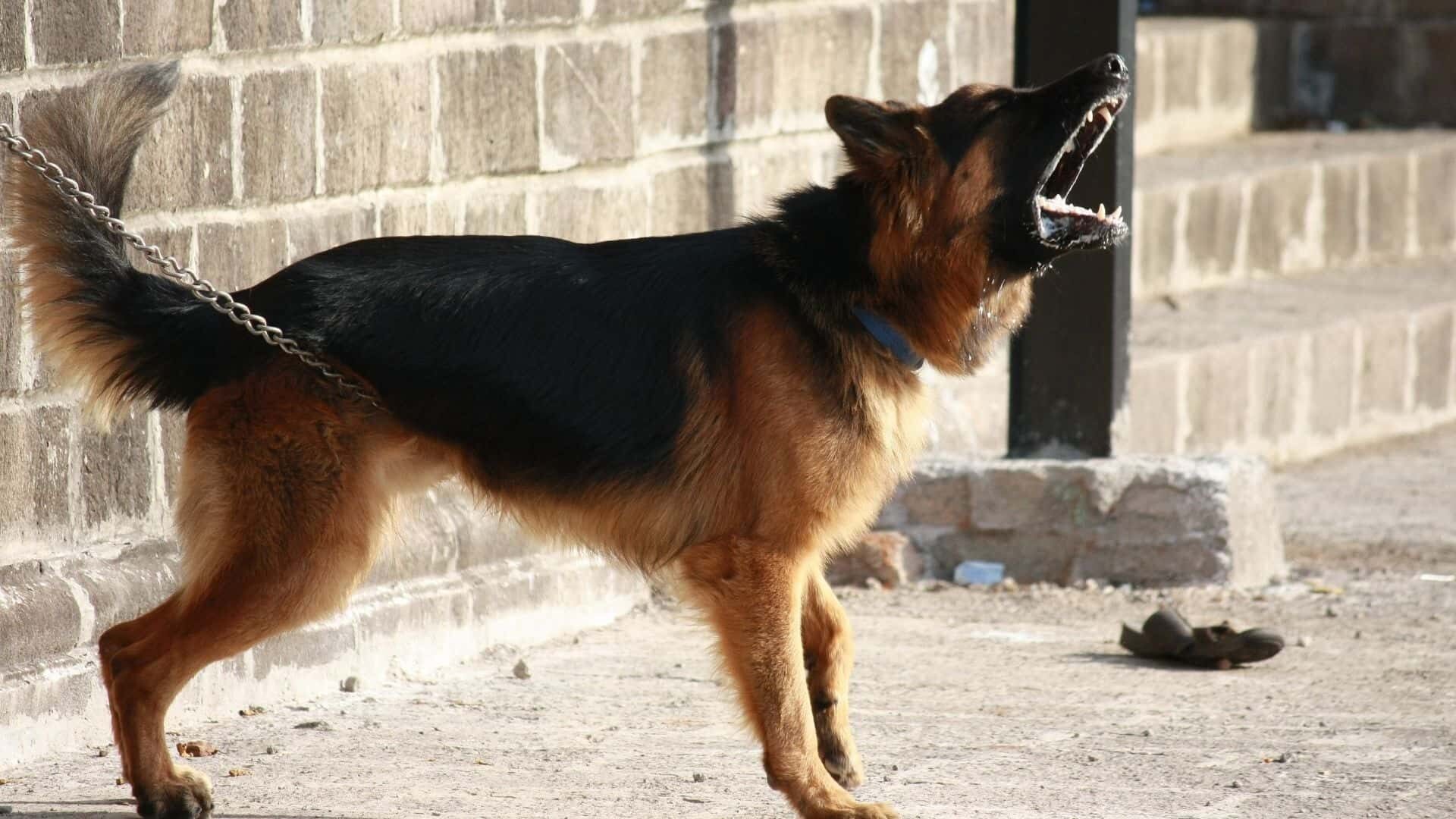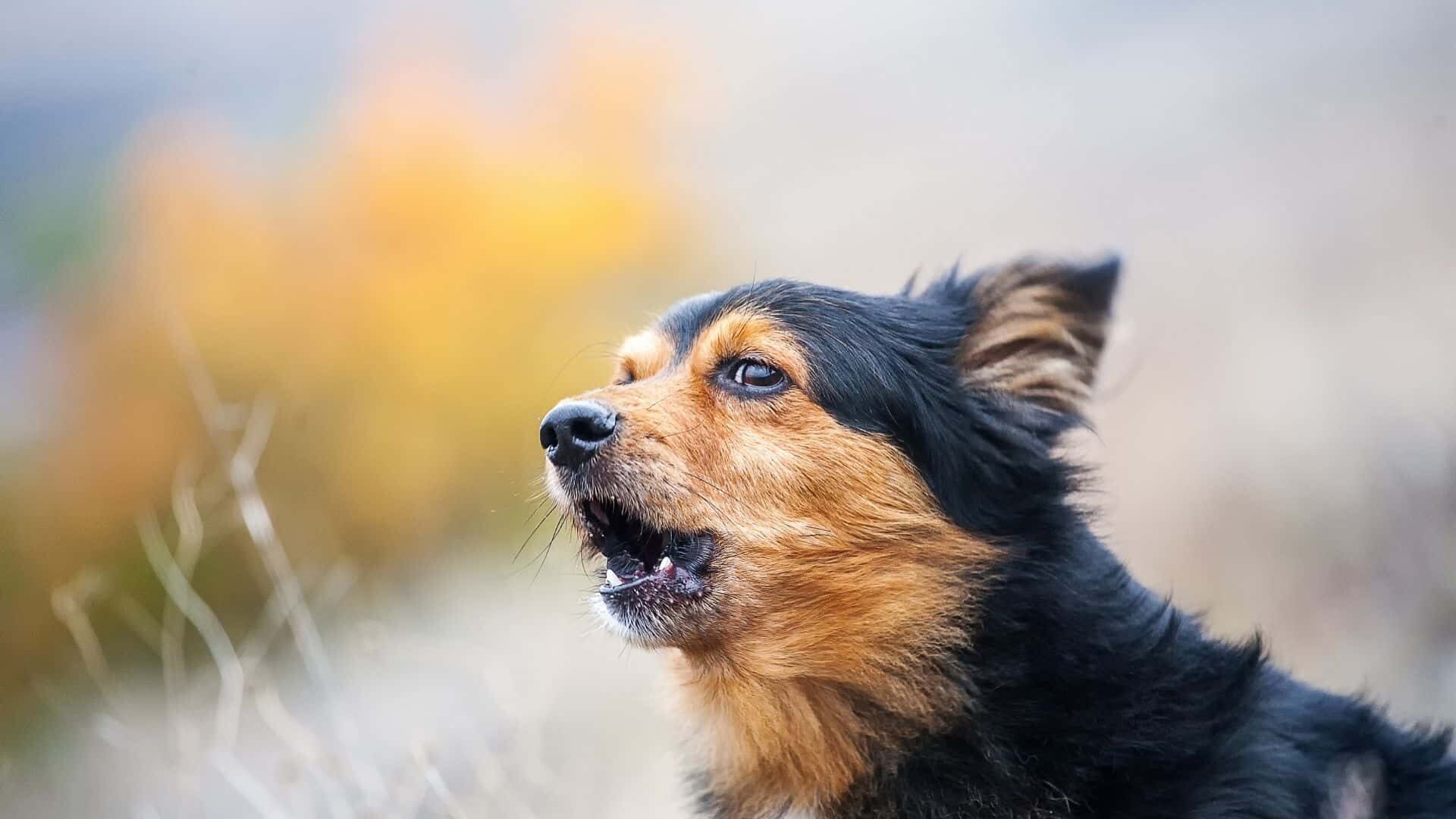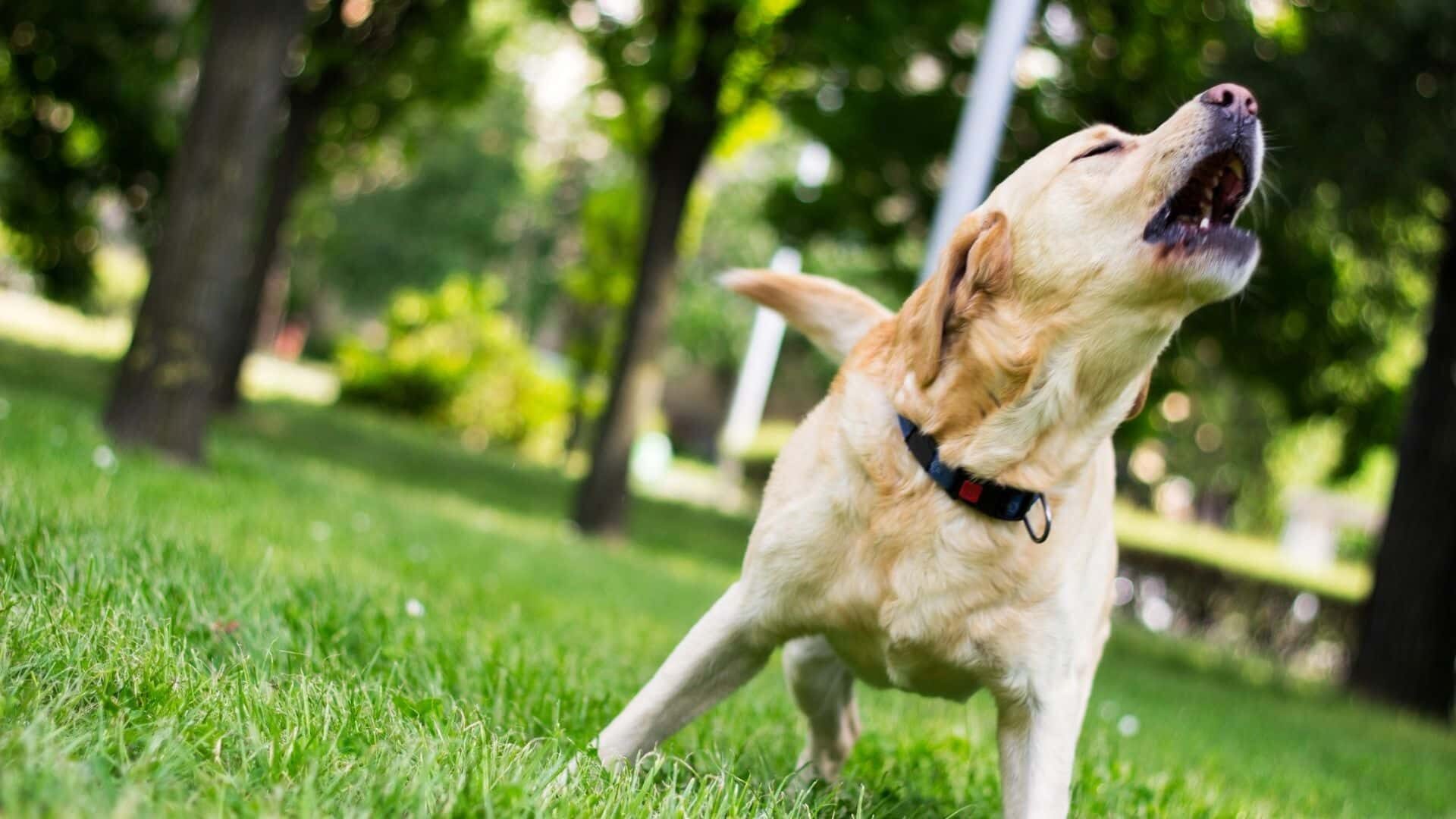If your dog lunges at other dogs, people, or objects like skateboards, do you fear going on a walk? Perhaps they snarl or bark as well. Physically and emotionally taxing is the task of walking an out-of-control dog.
While it may be tempting to skip walks altogether, your dog will be missing out on important mental and physical stimulation. How then do you proceed? Here are some suggestions for dealing with your dog’s tendency to lunge.
Your dog’s natural communication method is barking. There are numerous reasons why dogs will bark. Your dog may bark to draw your attention, but it may also bark because it’s playing or agitated, depending on the time of day and the situation.
However, if your dog starts barking at other dogs, this can become a nuisance as well as an annoyance. If your dog has developed the undesirable habit of barking at other dogs, you will need to work with him to break this bad habit and experiment with various training methods.
What is meant by reactivity?

The term “reactivity” refers to a dog’s tendency to become overly agitated or frightened in the face of everyday stimuli. A dog is considered reactive’ if it reacts extremely strongly to a scenario, regardless of whether it is a person, dog, cyclist, runner, or even a cat. Typically, this include barking, growling, lunging, or even biting them.
When dogs behave in these ways, their owners commonly characterise them as ‘aggressive’ or ‘protective,’ but there’s more going on here than that.
In other words, these behaviours indicate that your dog is going through a stressful time and is trying to cope with the stress by acting in ways that would make them feel better. Barking and lunging become their go-to methods of communication. They acquire what they want this way. What are they looking for?
It all depends on why your dog feels apprehensive in the first place, and what you can do about it.
Why does my dog growl and bark at other dogs?
While they’re playing with their four-legged companions off leash in the park, does your dog start barking, lunging, and spinning out of control?
The two of you are less likely to enjoy the stroll, and you could be concerned that your dog is growing violent.
If you’ve got a “frustrated greeter,” he or she is probably desperate to say hello. They become overstimulated, and the leash becomes an impediment they cannot overcome.
Allowing these dogs to always build up barking teaches them that this behaviour gets them what they want, even if they normally return to calmer behaviour once they say their hellos.
It’s not fair to the other dogs if you approach them in this way. The presence of an excitable dog can be too much for some people.
Your dog may become frightened or aggressive if they respond aggressively. It’s possible that their impulsive reactions could grow into something more difficult to deal with.
Stress can be reduced for everyone if we can teach our dogs to behave more calmly around other dogs.
When a dog lunges and barks while on a walk, it is commonly referred to as “leash reactive.” A reactive dog is one who is easily agitated, and a leash reactive dog is one who exhibits this behaviour while being restrained. What is the reason for this? Lunging can be motivated by one of three things.
Aggression is the least likely scenario. Dogs with malicious intent are rare, but they do exist. The most typical motivator is fear. An aggressive dog will lunge at a frightened item in an attempt to scare it away before it attacks.
The last thing you want is for your dog to grow enraged and lose emotional control because the leash prevents them from approaching the person, dog, or object they are excited to approach.
All of these factors must be taken into consideration, but you must first choose which one is most important to your dog. Emotional self-control techniques come in helpful if your dog is upset. Developing your dog’s self-confidence is essential if he or she is afraid. Management strategies and therapies are the same regardless of the reason for lunging.
Fear is the most prevalent reason why your dog is acting this way, but there are many others.
If this other dog challenges them while they’re on the leash with you, they won’t be able to flee because they’re tied to you.
Behaving aggressively scares away other dogs and humans, which is what dogs have learned through experience.
As a precautionary measure to keep the other dog at bay, they use their innate desire to fight rather than flee.
The way many of us walk our dogs can potentially heighten their dread in this situation. Walking directly toward another dog is seen as both disrespectful and aggressive by dogs.
When we walk our dog on the sidewalk next to another person’s dog, we’re putting them in a potentially dangerous situation.
Your dog’s barking and lunging at other dogs when on the leash isn’t just due to fear.
Frustration is the second most typical motivation for this type of behaviour, as the dog really wants to play with this new, exciting acquaintance but is thwarted by the leash.
The bark and general demeanour of your dog may typically tell you if they’re afraid or just seeking for a good time.
If they’re ready to play, they’ll start leaping on you in a playful manner to entice you to join in the fun.
To see the best in their dog, owners often blame their dog’s bad behaviour on this. However, in the vast majority of situations, fear is the driving force behind the activity.
What could be causing my dog’s hyperactivity?
Adolescence, or the adolescent phase of your dog, begins about the time he or she is 5 months old and is when reactivity is most likely to occur. Once a dog’s basic thoughts about the world have been formed, they begin to undergo a series of physiological changes. There is a lot of growth and development, as well as new hormones and feelings.
Fear periods or “fear phases” are common in adolescence, as well. Your dog will be wary and distrustful of things he was previously fine with for a short time (about 2 weeks). As an example, they might growl at your friend’s new beard or bark at the trash can you pass on your daily walk.
Adolescent dogs, by and large, have a lot to say. They’re prone to extreme emotions like fear or excitement, and as a result, they exhibit certain noteworthy behaviours.
One or the other of these two factors is responsible for the majority of dogs’ arousal.
There is a reason they are afraid of other dogs, and it has nothing to do with how they were raised as a puppy. They lunge and bark at other dogs in an attempt to frighten them or get them to flee.
Reactive on-lead and avoidant when off-lead are two characteristics of a terrified dog.
Due to their regular habit of meeting every dog they see, they’re irritated by others. They bark and tug at their leash because they’re so eager that they can’t stand the thought of not being able to say hello.
When playing with other dogs, the frustrated dog may be alright off-leash, but he won’t listen to your commands and may even be impolite or overly exuberant.
Your dog may be afraid or frustrated at times. Your dog’s brain is like two gears grinding against each other when it has a combination of good and negative feelings. One gear expresses concern, “I don’t believe this is a good idea,” while the other exclaims, “I really want to make friends with them, let’s go say hey!”.
Frustrated and terrified gears try to turn against one other, generating ‘conflict’ friction. Because they’re curious about the other dog and afraid of what might happen, this explains why some dogs yelp and lunge when they see one. Find out why your dog’s barking at other dogs and how to stop it.
How to stop your dog from barking at other dogs?

Using a few easy methods while walking your dog can dramatically lessen the likelihood that he will engage in this type of behaviour.
1. Avoidance
When it may be tricky and impossible to avoid all other dogs while out and about, you can keep your dog out of harm’s way by avoiding them at all costs.
Changing your route if you frequently encounter a dog that elicits this type of behaviour in your dog implies avoiding strolling on sidewalks where they are likely to come face-to-face with other dogs.
It’s also a good idea to keep an eye out for other dogs who might be crossing your route, and then alter your course to put some distance between yourself and them.
2. Teach your dog a complementary but incompatible new skill
You can also teach your dog an action that is incompatible with lunging, such as sitting or lying down. They can’t, for example, lunge at another dog while simultaneously turning to look at you.
Your dog will eventually choose this alternative behaviour instead of lunging if you treat it heavily enough. “Watch me,” “Touch,” and “Find it” are just a few of the fantastic commands you may use with your dog to communicate (where you drop treats at your feet for your dog to find).
Dogs can learn these tricks even when they are highly stimulated emotionally. Furthermore, they serve the purpose of diverting your dog’s attention away from the trigger and toward you.
3. Take away the incentive
Barking is a form of positive reinforcement for your dog. They wouldn’t do it if they didn’t have to. Get to the bottom of why they’re barking and get rid of it. The barking should stop as soon as you remove the opportunity from your dog’s mouth.
Close the curtains or place your dog in another room if they bark at people or animals passing by your living room window.
Bring them inside if they start barking at passersby while out in the yard.
4. Management
Make sure you are aware of what your dog’s ‘triggers’ are, and how near they have to be before your dog begins to lash out at you. Your dog’s reaction may be exacerbated by certain canine breeds, sizes, or sexes. Or maybe it’s just certain places (like near your house) or times of day (like after dark). Your dog’s comfort will be improved as a result of this.
5. Enrichment
The brain of your dog will benefit much from enrichment. Mental stimulation is just as important for dogs as physical stimulation, since it helps them control their emotions and settle down after a stressful day.
Soothing your dog with licks and chews is especially effective. Your dog’s natural soothing behaviours can be encouraged with the use of Lickimats, Kongs, and Chews.
You do not, however, need to purchase anything to provide this cerebral stimulation for your dog. You can play simple games like hiding food in a scrunched-up blanket or strewn around the lawn for your dog to find, or packing it into toilet paper tubes for them to shred.
6. Don’t panic
Because anxiety can spread quickly among dogs, it’s critical that you maintain your composure if you notice another canine approaching.
Your dog will pick up on your dread and anxiety, and it will amplify their own, if this is a fear trigger for you as a result of prior life experiences or the conduct of your dog.
Your dog will be calmer if you remain calm, and you’ll be able to handle the situation more effectively.
7. Control by a leash
Many of us instinctively shorten our dog’s leash when we approach other canines.
We then use the leash to keep them close to us, especially if they are lunging. Aside from making things worse, we are teaching our dog that another dog’s approach should be dreaded, which might lead to undesirable behaviours.
A no-pull harness can help lessen the harmful effects of your dog’s lunging behaviour.
8. Training
When you take your dog for a stroll, bring along some of their favourite treats to thank them if they spot another dog. Give them a treat as soon as they glance at a dog and answer “yes” without giving them time to ponder about barking. As long as the dog is in view, keep doing this.
There is too much going on for your dog to handle, and the other dog is too close for comfort. The next time you see your dog’s trigger, make a mental note not to come so close, but keep rewarding them for being around it!
This is not going to educate them to growl at other dogs in the neighbourhood. Dogs learn that seeing other animals is a pleasant thing and that it’s better to focus on you rather than bark or lunge at them.
While practising this, your dog will get less concerned about the other dog as time goes on. You know you’ve made a major impact in their training when they can look at another dog and look back at you without barking.
Watch How to teach your dog to bark and stop barking | Video
What can I do to stop my dog from growling and barking at other canines in the neighbourhood?
Before your dog starts barking or engaging with other dogs, try to divert his focus to anything else. Just grab a handful of treats and sprinkle them on the ground for an easy method. Make him execute simple chores like “touch” to bring his attention back to you. Engage/disengage.
Can you explain why some dogs bark at others?
Anyplace a dog associates with you or its owner might be considered their domain, including your yard, block, automobile, and walk routes. As a way to mark their territory, dogs will also bark at other dogs who are outside their house.
What is it about other dogs that makes my dog go crazy?
In most cases, the tension of other dogs is causing dogs to bark and lunge at each other. They could be frightened, hostile, or ecstatic at the prospect of the event. When a dog sees another dog and is unable to attack, flee, or even go say hi, it becomes “upset,” and this results in barking and lunging. Your dog is attempting to get the other dog to leave your property.
How can I understand why my dog is aggressive with some canines but not others?
Fear, poor communication, defensive, possessive behaviour over resources (including maybe family members or other pets), or territorial behaviour over territory or owner are all possible causes of canine aggression when two unfamiliar dogs meet.
How to stop my dog from being aggressive toward other dogs?
Screaming at your dog can only exacerbate their aggression, no matter how irate you are about their behaviour….
You can help your dog calm down by blocking their view of the other dog.
Verdict

In order to express their emotions, dogs often bark and lunge at other dogs, but they’re not attempting to be nasty or protective. They don’t realise that their actions are ‘inappropriate’. They’re only doing it for themselves, to make them feel better about themselves.
It is best to take a deep breath, give them some space from their trigger, and work with an accredited dog trainer to assist increase your dog’s self-confidence and teach them more suitable methods to communicate their feelings.





